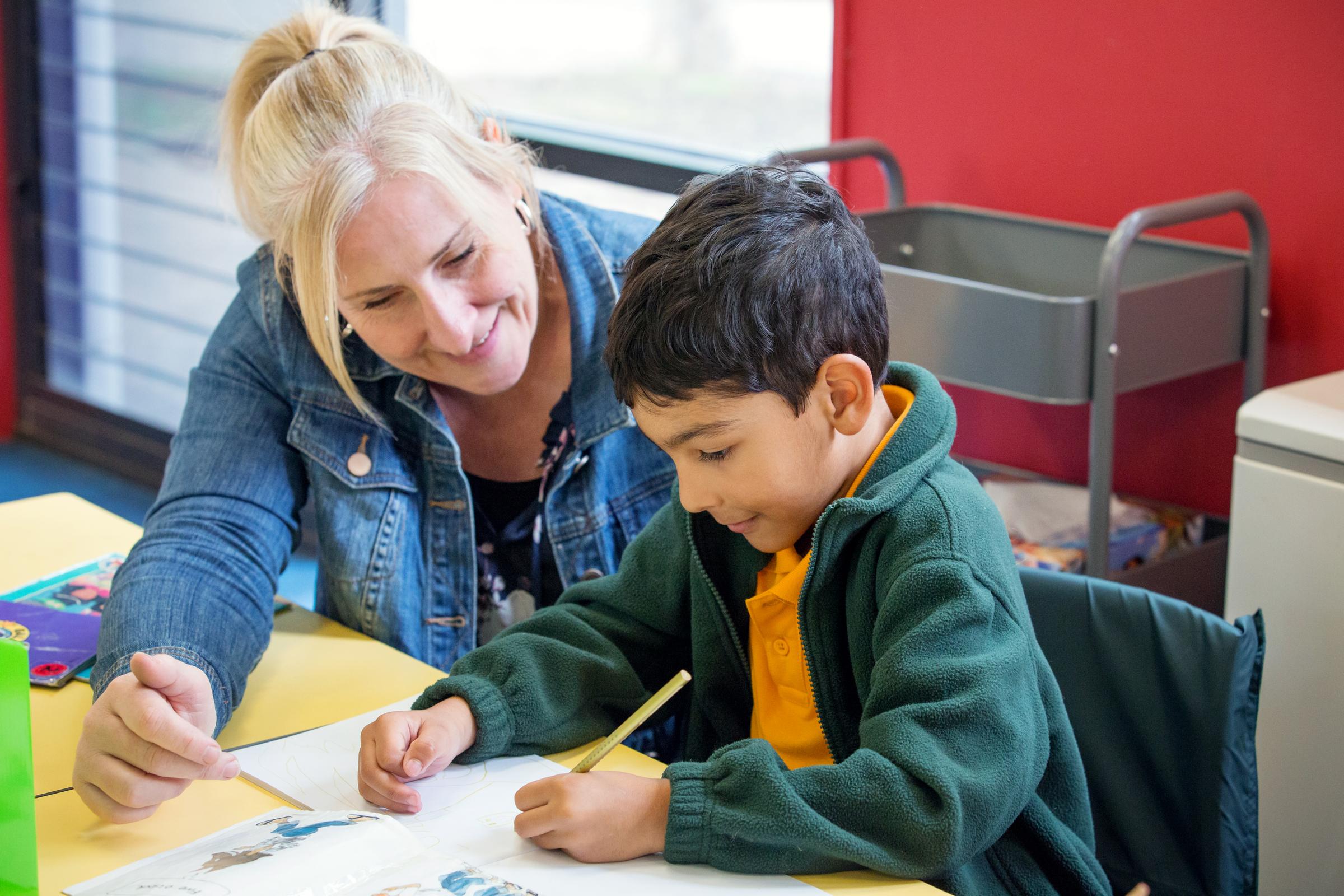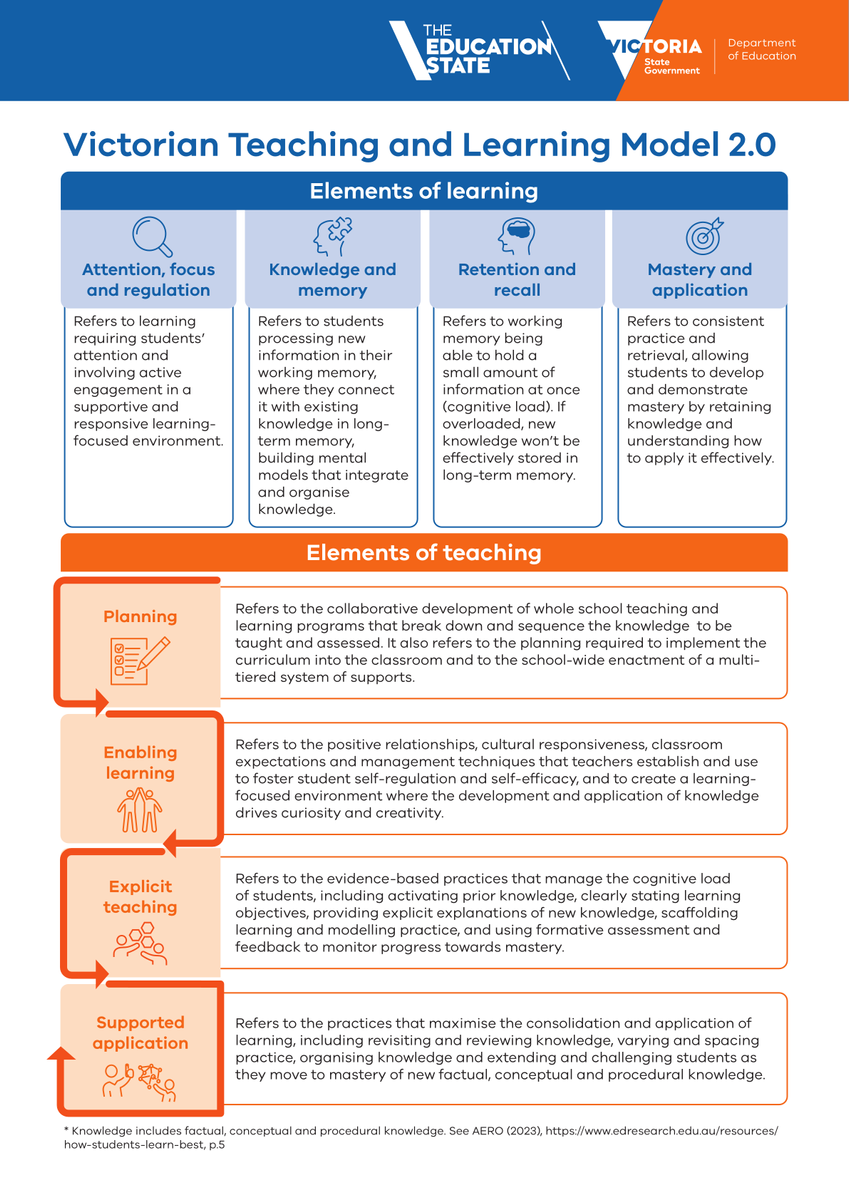Teaching and Learning
Mrs Peta Phillips - Assistant Principal

Teaching and Learning
Mrs Peta Phillips - Assistant Principal
In last term’s newsletter, I introduced the Karoo community to the Victorian Teaching and Learning Model 2.0 (VTLM 2.0). In this edition, I will provide further insights into the model, including practical tips for parents and carers to support their children’s learning using the VTLM 2.0 framework.


The Victorian Teaching and Learning Model (VTLM) 2.0 is an updated framework for Victorian schools, designed to improve teaching practices based on the latest research in neuroscience and education. The goal is to ensure every student has the best chance to succeed by focusing on two core components: how students learn and how teachers teach. This new approach aims to make learning more effective, lasting, and engaging for children across Victoria.
Why are Victorian schools changing their teaching methods?
The VTLM 2.0 is based on years of research into effective teaching strategies and brain science. It's a move away from traditional methods toward a more strategic, evidence-based approach that helps students not just learn but truly understand and retain information.
The elements of learning: How your child's brain learns
The VTLM 2.0 is built on four key principles of how the brain processes and remembers information. Understanding these elements can help you reinforce them at home.
1. Attention and focus
Learning begins with engagement. Teachers create environments that minimize distractions and help students concentrate on the lesson. At home, you can help by providing a quiet space for homework and encouraging your child to focus on one task at a time.
2. Knowledge and memory
The brain builds new information on existing knowledge. Teachers help students connect new ideas to what they've already learned. You can support this by asking your child to recall previous lessons or relate new topics to things they already know.
3. Retention and recall
Long-term memory requires practice. Teachers use strategies like spaced repetition and regular quizzes to help students remember information over time. You can help by briefly quizzing your child on what they learned in class or encouraging them to revisit old notes.
4. Mastery and application
True learning is being able to apply knowledge in different situations. Teachers use problem-solving and collaboration to help students use their new skills in a real-world context. Support this by asking your child how they can use their new knowledge to solve a problem or create something.
The elements of teaching: The 'How-To' for teachers
The VTLM 2.0 encourages a step-by-step, or explicit teaching, approach. This means teachers are intentional and transparent in their instruction, which helps students understand, use, and remember what they learn.
Here's how this often looks in the classroom:
Step 1: Clear goals
Lessons typically begin with a clear explanation of what students will learn and why it's important.
Step 2: Structured steps
Content is broken down into smaller, manageable steps.
Step 3: Active checks
Teachers regularly check for understanding to ensure students are following along before moving on.
Step 4: Repeated practice
Students get to practice new skills in different ways over time, which helps solidify the information in their long-term memory.
Your role as a parent or carer is vital in reinforcing what's happening in the classroom. By asking specific questions, you can help your child reflect on their learning and strengthen their understanding.
10 key questions to ask your child about their day
Over the past 12 months, the dedicated staff at Karoo Primary School have continued to deepen their professional knowledge and understanding of the Victorian Teaching and Learning Model 2.0 (VTLM 2.0).
Our teachers have participated in training provided by the Victorian Academy of Teaching and Leadership, as well as professional learning sessions led by Dr. Ryan Dunn, Senior Lecturer at The University of Melbourne.
Through these sessions teachers have.
Additionally, our Professional Learning Communities (PLCs) have initiated Inquiry Cycles focused on specific areas of the VTLM 2.0 framework. Our Staff Forums have concentrated particularly on the teaching component of Explicit Teaching, enhancing our skills in utilising Worked Examples in the classroom, including the implementation of Problem Pairs in Mathematics.
At Karoo Primary School, we are committed to continuously building and developing best practices. I am excited to share with you, in upcoming newsletters, how we achieve this dedication to excellence.
I look forward to seeing you all around our wonderful school
Warm regards,


Assistant Principal
Peta Phillips